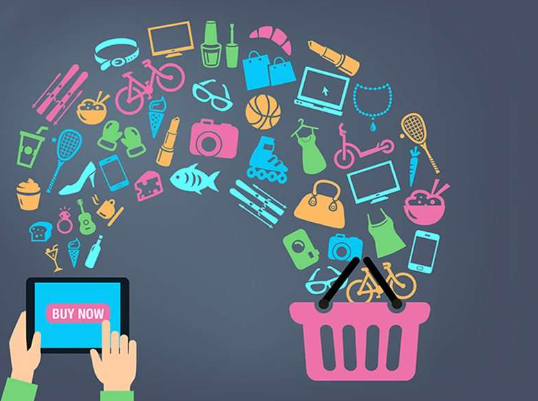Flash sale and daily deal websites have long been a staple in the e-commerce landscape, offering time-sensitive discounts that entice shoppers with limited-time offers on a wide range of products. From the early days of sites like Groupon to more recent platforms like Woot and Zulily, these sites have changed the way consumers shop online. As we look ahead to 2024 and beyond, flash sale and daily deal sites are evolving to meet the needs of increasingly discerning shoppers. Here are some key trends to watch in the future of these platforms.
1. Increased Personalization and AI Integration
Personalization has become a buzzword in e-commerce, and flash sale sites are no exception. As artificial intelligence (AI) and machine learning technologies continue to advance, these platforms will increasingly rely on data to provide more tailored offers to individual shoppers. Rather than relying solely on broad, one-size-fits-all sales, algorithms will analyze browsing behavior, past purchases, and even social media activity to predict and recommend time-sensitive deals that best match each shopper’s preferences.
This trend towards hyper-personalization will not only improve the customer experience but also increase conversion rates for flash sale sites. Users are more likely to engage with deals that align with their unique tastes and needs, leading to higher sales and customer retention.
2. Integration of Subscription Models
Subscription-based models have seen explosive growth across various industries, and flash sale sites are starting to experiment with this approach. Rather than waiting for a daily deal, consumers could subscribe to get exclusive access to certain sales, early-bird offers, or special discounts available only to members. Companies like Amazon with its Prime Day and specialized flash sale sites like MyHabit have already tested similar models, and it’s likely we’ll see more of this in the coming years.
Subscription services can drive recurring revenue for these sites and foster brand loyalty. Customers, in turn, can benefit from the convenience of knowing they’ll always have access to exclusive deals, making it a win-win situation for both parties.
3. Mobile-First Shopping and Social Commerce
The rise of mobile commerce is undeniable, with more people shopping through their smartphones than ever before. Flash sale sites are capitalizing on this shift by optimizing their platforms for mobile devices. Expect to see a surge in mobile-first shopping experiences, including user-friendly apps, push notifications for flash sales, and streamlined checkouts.
Additionally, social media is becoming a dominant force in online shopping. Flash sale sites are increasingly leveraging social media platforms like Instagram, TikTok, and Facebook to engage users directly. Social commerce—where shoppers can discover, purchase, and share deals seamlessly through social networks—will play a bigger role in the future. Expect to see more influencer collaborations, live-streamed sales, and exclusive social media deals designed to create a sense of urgency and excitement.
4. More Sustainable and Ethical Options
With growing consumer interest in sustainability and ethical shopping, flash sale sites are beginning to adapt by offering more eco-friendly and socially responsible products. Shoppers are increasingly looking for deals that align with their values, and platforms are responding by curating deals for sustainable goods, cruelty-free brands, and ethically sourced products.
As eco-conscious consumerism continues to rise, it’s likely that flash sale sites will work to feature green products more prominently, providing better deals on sustainable goods, while also highlighting brands that align with ethical practices. This shift not only meets the demands of modern shoppers but also helps attract a younger, socially aware demographic.
5. Expansion of Niche Markets and Experiences
While traditional flash sale sites have focused heavily on physical products, a growing trend is the expansion into experiences and niche markets. Platforms like Groupon have already ventured into offering experiences—such as travel deals, restaurant discounts, and spa packages—and this trend is set to expand.
In 2024 and beyond, flash sale sites may become more specialized, offering highly curated experiences, such as exclusive tickets to events, access to VIP experiences, or personalized travel deals. As people increasingly seek unique and memorable experiences rather than just physical products, these sites will need to adapt by catering to this demand.
6. Enhanced Gamification and Interactive Shopping
Gamification is another trend poised to reshape flash sale and daily deal sites in the coming years. By integrating elements of gaming—such as challenges, rewards, and progress tracking—these sites can create more engaging shopping experiences. Shoppers could earn points for participating in certain deals, unlocking exclusive sales or rewards as they accumulate more activity.
Interactive features like spin-to-win games, time-based challenges, and reward tiers could also make the flash sale experience feel more fun and rewarding, motivating consumers to check back regularly and participate more frequently.
7. Artificial Scarcity and FOMO (Fear of Missing Out)
Flash sale sites have always relied on creating a sense of urgency, but in the future, the tactics for invoking FOMO (fear of missing out) will likely become even more sophisticated. Through AI, flash sale platforms could dynamically adjust deal availability in real time, introducing limited quantities that feel even more exclusive. Real-time countdowns, personalized urgency messages, and social proof (e.g., “X people are currently viewing this deal”) will become more prevalent, driving shoppers to make quick purchasing decisions.
This tactic has been extremely successful in the past and will likely continue to play a central role in the future success of flash sale platforms.

Flash sale and daily deal sites have always been designed to offer shoppers great discounts, but as we move into 2024 and beyond, the landscape is shifting to accommodate more personalized, mobile-centric, sustainable, and immersive experiences. By embracing these trends, these platforms will continue to evolve to meet the demands of the modern consumer, who is looking for convenience, value, and experiences that align with their preferences and values. For both retailers and shoppers, the future of flash sale sites is bright, full of innovation, and primed to deliver even more exciting and dynamic shopping opportunities.
